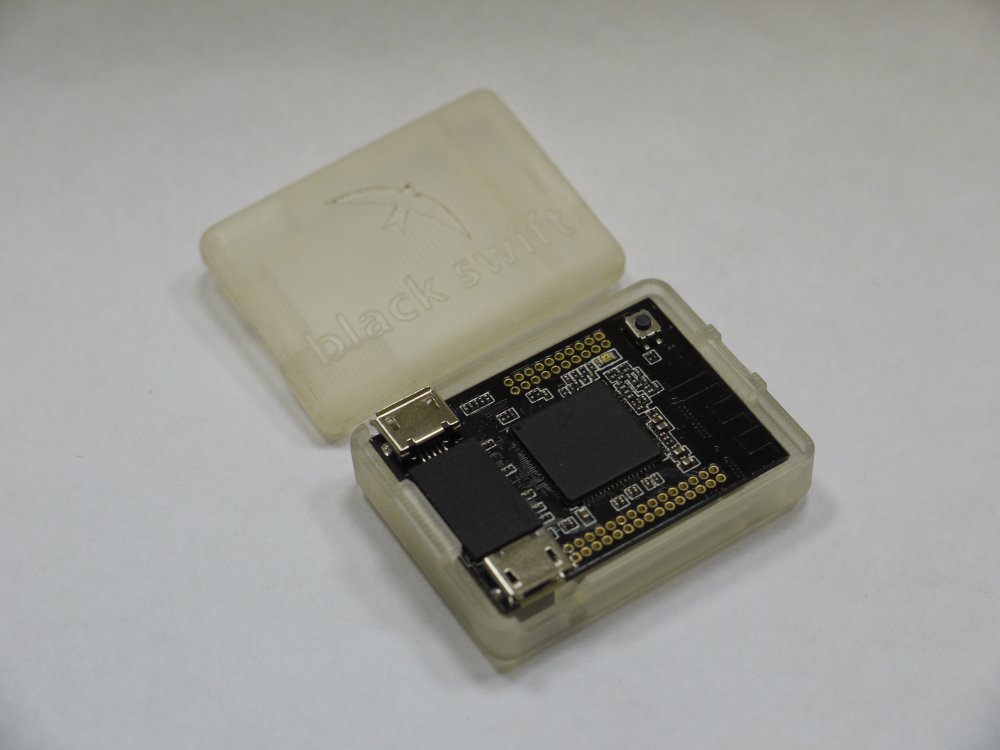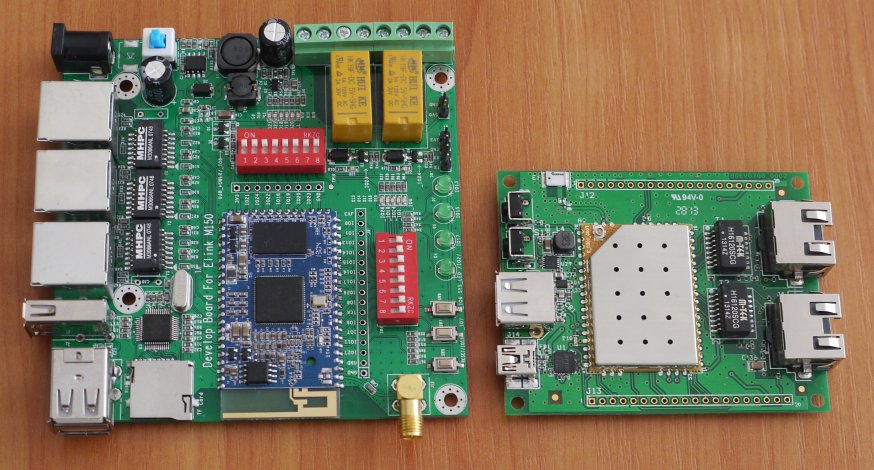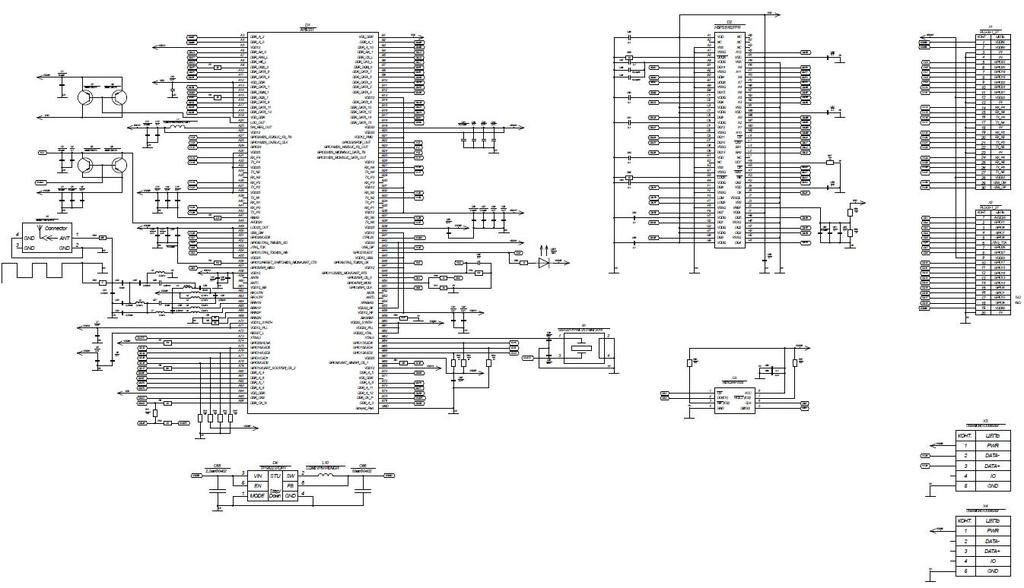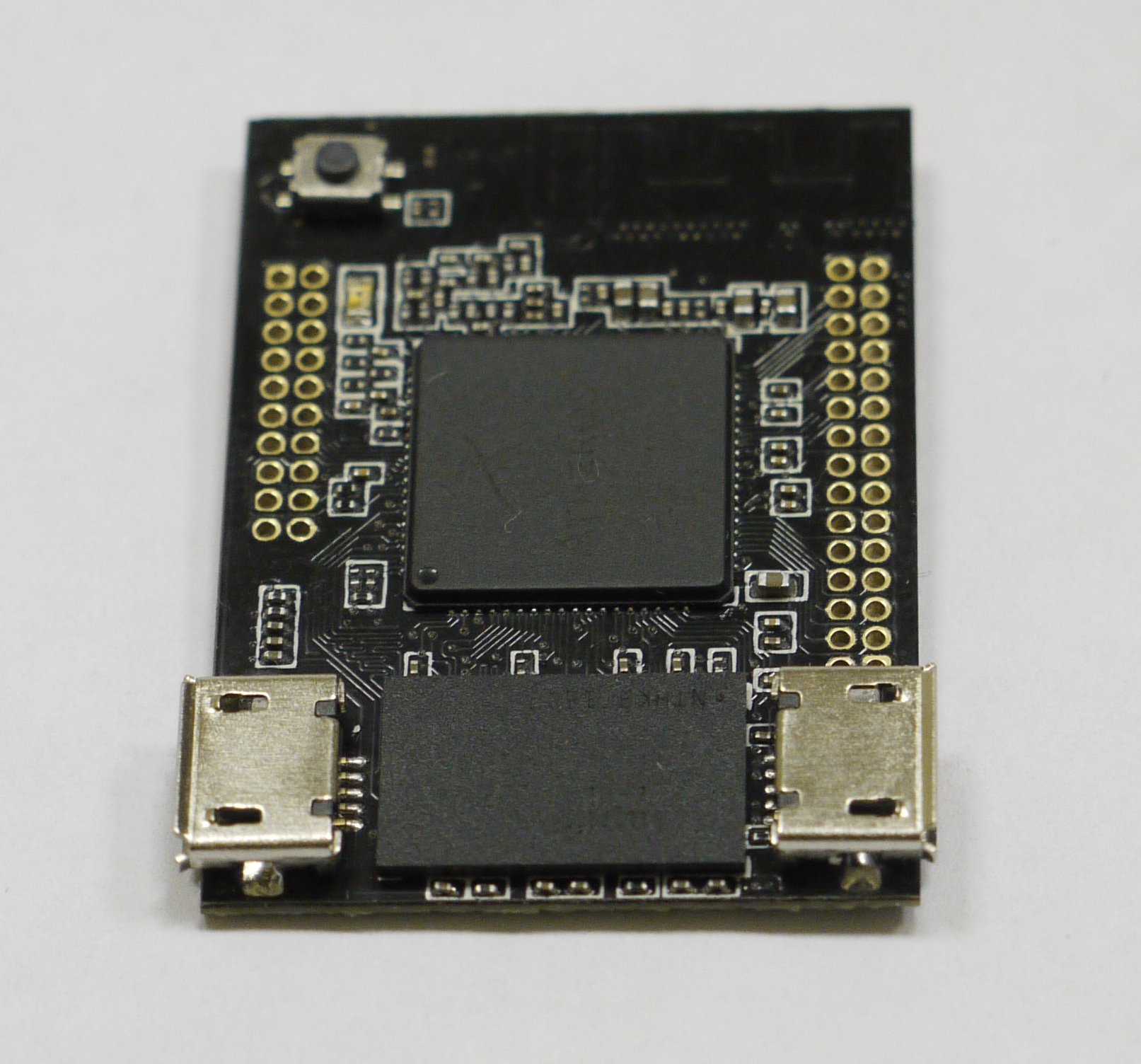There is only one step left to Kickstarter - is there a chance for the project?
For the past 9 months, we have been developing our project - a miniature Black Swift network computer. It's time to give birth, so to speak.

I would like to share my experience and learn the opinion of the community: was it not for nothing that we started all this? We are almost ready to enter Kikstarter and, as the initiator of the project, I am slightly shaking from the periodic adrenaline rush. I will not hide, I am waiting for words of support and approval, but healthy criticism will be extremely useful.
')
Anyone who is interested in our history, please read and comment.
Here I described how it happened. The customer came with the project, we began to look for options for the technology platform, found several boards on the Atheros AR9331.

We looked, thought, and decided to make our own implementation. First, it was interesting. Secondly, considering the production cost of similar boards, we realized that it would be possible to do your own somewhere at 30-40% at least cheaper than buying ready-made. Thirdly, several ideas immediately appeared on how to do better than those of the “competitors”. From the very beginning, one of the ideas was to make the project completely Open Source - both from the side of software and hardware. On the one hand, there is a lot of information on the AR9331 everywhere. However, nowhere is the available working scheme of the device based on this SoC observed. People have already implemented hundreds of projects, and an open, ready-made platform has never appeared.
Our brilliant engineer Valera developed the first revision of the board for about three months.

We wanted to make the board miniature and fit in with four layers (to make it as cheap as possible). However, it is very difficult to do if using DDR2 memory. Here is the board under the memory chip:

After much suffering, everything turned out, and we sent the documentation to our production specialist, Alexey. Alexey lives in Hong Kong, a professional electronics engineer, and in the field of electronics production in Shenzhen ate (thank God, not literally!) More than one pack of dogs. The factory for the manufacture of printed circuit boards did not look for, involved the same that did Virturilki . But with the search for a factory for the installation we suffered. Nobody was particularly eager to do a rather complicated installation (we actively used 0201 components with dimensions of 0.6 × 0.3 mm) on a draw of 20 boards. Well, yes, thank God, there are many factories in Shenzhen, they have found, made. And in June, we finally got the first revision of the boards on our hands and began to deal with them. Of course, the fees did not work right away (who would have doubted?). In a week, Valera found several of our jambs and about the same number of Chinese ones (the transistor rotated 180 degrees during installation is what?). But his golden hands still allowed us to run most of the boards. Of course, our joy was crowned by an article on Habrahabr.
After a month of working with the board, it became clear what was missing and where to go next. Of course, first of all corrected errors. Added a button - without the ability to make a hard reset or enter the boot loader with the default settings, it is very hard to work with raw firmware. Added an FTDI chip, so that you can not only power the board from the computer's USB port, but also immediately see the console. Added the ability to flash the NOR flash chip without soldering it from the board (yes, and hard reset does not always help in development, alas). Increased the power of the DC-DC converter, which makes 5V from USB stabilized 3.3V to power the board itself.
With the help of mrmager developed a plastic case. Prototypes printed on a 3D printer. Thermal printer - the result ostoyny, alas. But the photolithographic impressed (although expensive, of course):

Yes, the case came up with the name of our computer - Black Swift. Black Swift . Swift is a small, but very fast bird that hints, as it were. Well, black - Alexey successfully chose a color for the board, we liked it. Our designer, Tatiana, drew a pretty logo.

Well, with the software, of course, namuchalis. Boot-loader and firmware (u-boot and OpenWrt 14.07 Barrier Breaker) earned as it should.
And in late October, the second revision of the boards arrived:


This time there were no critical problems, and the fees were earned the very next day. But, alas, it was not without jambs ... So there will be a third revision.
And on Habrahabr one more our article appeared . Where nearly a thousand people expressed a desire to purchase our computer. Motivates, however!

And so, we come to the current moment.
There is a working prototype of a miniature network computer, made at a quite decent level. In our opinion - a very useful thing in the household.
There is an understanding: it is impossible to earn money on sales of the board itself. Simple arithmetic: even if you make a profit of 5 USD from one fee (20 USD is the real operating cost in Moscow, 25 USD is the retail price), then with a circulation of 1000 boards we will earn as much as 5 thousand USD! Absolutely crazy money, yeah (sarcasm). And it is unlikely that it will be possible to sell an order of magnitude more in Russia, we will be realistic.
Therefore, we decided:
1. A payment should not be “sold”, but “distributed”. If you “give it away” to people at cost, then the audience will grow much faster, which can make Black Swift (especially considering openness) another common technological platform, a base for independent developments. If people with their projects come to us, we will be happy to help organize the production of lots and (hopefully!) Earn our living.
2. It is necessary to enter the world market through Kickstarter.
So, in December we are going to make another test revision of our board (already in two versions - regular and Pro version). I hope this revision will be final, without jambs (I spit three times over my left shoulder).
In January, we want to make a trial run - at least 500 boards. If we collect pre-orders for this, of course (if there is no one who wants to buy a computer, then why?). Here the main risk factor is the Chinese New Year. Practically the whole of February, China is not working, so you need to have time to make and deliver the boards in January, otherwise the next term is already mid-March.
Well, from April, I hope, the fee will be available for immediate purchase, without pre-order.
Next week we plan to start a fundraiser on Kickstarter. Registered legal entity in New Zealand, struggling to prepare materials. As usual, everything is not easy when you do it yourself (we decided to refuse the services of intermediaries). Scary, already terrible. Do you think we will succeed?
PS I beg of people who vote "there is no chance at Kickstarter" - could you reveal your point of view in the comments? It needs constructive criticism.

I would like to share my experience and learn the opinion of the community: was it not for nothing that we started all this? We are almost ready to enter Kikstarter and, as the initiator of the project, I am slightly shaking from the periodic adrenaline rush. I will not hide, I am waiting for words of support and approval, but healthy criticism will be extremely useful.
')
Anyone who is interested in our history, please read and comment.
The birth of an idea
Here I described how it happened. The customer came with the project, we began to look for options for the technology platform, found several boards on the Atheros AR9331.

We looked, thought, and decided to make our own implementation. First, it was interesting. Secondly, considering the production cost of similar boards, we realized that it would be possible to do your own somewhere at 30-40% at least cheaper than buying ready-made. Thirdly, several ideas immediately appeared on how to do better than those of the “competitors”. From the very beginning, one of the ideas was to make the project completely Open Source - both from the side of software and hardware. On the one hand, there is a lot of information on the AR9331 everywhere. However, nowhere is the available working scheme of the device based on this SoC observed. People have already implemented hundreds of projects, and an open, ready-made platform has never appeared.
First pancake
Our brilliant engineer Valera developed the first revision of the board for about three months.

We wanted to make the board miniature and fit in with four layers (to make it as cheap as possible). However, it is very difficult to do if using DDR2 memory. Here is the board under the memory chip:

After much suffering, everything turned out, and we sent the documentation to our production specialist, Alexey. Alexey lives in Hong Kong, a professional electronics engineer, and in the field of electronics production in Shenzhen ate (thank God, not literally!) More than one pack of dogs. The factory for the manufacture of printed circuit boards did not look for, involved the same that did Virturilki . But with the search for a factory for the installation we suffered. Nobody was particularly eager to do a rather complicated installation (we actively used 0201 components with dimensions of 0.6 × 0.3 mm) on a draw of 20 boards. Well, yes, thank God, there are many factories in Shenzhen, they have found, made. And in June, we finally got the first revision of the boards on our hands and began to deal with them. Of course, the fees did not work right away (who would have doubted?). In a week, Valera found several of our jambs and about the same number of Chinese ones (the transistor rotated 180 degrees during installation is what?). But his golden hands still allowed us to run most of the boards. Of course, our joy was crowned by an article on Habrahabr.
Step two, but not last
After a month of working with the board, it became clear what was missing and where to go next. Of course, first of all corrected errors. Added a button - without the ability to make a hard reset or enter the boot loader with the default settings, it is very hard to work with raw firmware. Added an FTDI chip, so that you can not only power the board from the computer's USB port, but also immediately see the console. Added the ability to flash the NOR flash chip without soldering it from the board (yes, and hard reset does not always help in development, alas). Increased the power of the DC-DC converter, which makes 5V from USB stabilized 3.3V to power the board itself.
With the help of mrmager developed a plastic case. Prototypes printed on a 3D printer. Thermal printer - the result ostoyny, alas. But the photolithographic impressed (although expensive, of course):

Yes, the case came up with the name of our computer - Black Swift. Black Swift . Swift is a small, but very fast bird that hints, as it were. Well, black - Alexey successfully chose a color for the board, we liked it. Our designer, Tatiana, drew a pretty logo.

Well, with the software, of course, namuchalis. Boot-loader and firmware (u-boot and OpenWrt 14.07 Barrier Breaker) earned as it should.
And in late October, the second revision of the boards arrived:


This time there were no critical problems, and the fees were earned the very next day. But, alas, it was not without jambs ... So there will be a third revision.
And on Habrahabr one more our article appeared . Where nearly a thousand people expressed a desire to purchase our computer. Motivates, however!

Our plans
And so, we come to the current moment.
There is a working prototype of a miniature network computer, made at a quite decent level. In our opinion - a very useful thing in the household.
There is an understanding: it is impossible to earn money on sales of the board itself. Simple arithmetic: even if you make a profit of 5 USD from one fee (20 USD is the real operating cost in Moscow, 25 USD is the retail price), then with a circulation of 1000 boards we will earn as much as 5 thousand USD! Absolutely crazy money, yeah (sarcasm). And it is unlikely that it will be possible to sell an order of magnitude more in Russia, we will be realistic.
Therefore, we decided:
1. A payment should not be “sold”, but “distributed”. If you “give it away” to people at cost, then the audience will grow much faster, which can make Black Swift (especially considering openness) another common technological platform, a base for independent developments. If people with their projects come to us, we will be happy to help organize the production of lots and (hopefully!) Earn our living.
2. It is necessary to enter the world market through Kickstarter.
So, in December we are going to make another test revision of our board (already in two versions - regular and Pro version). I hope this revision will be final, without jambs (I spit three times over my left shoulder).
In January, we want to make a trial run - at least 500 boards. If we collect pre-orders for this, of course (if there is no one who wants to buy a computer, then why?). Here the main risk factor is the Chinese New Year. Practically the whole of February, China is not working, so you need to have time to make and deliver the boards in January, otherwise the next term is already mid-March.
Well, from April, I hope, the fee will be available for immediate purchase, without pre-order.
Next week we plan to start a fundraiser on Kickstarter. Registered legal entity in New Zealand, struggling to prepare materials. As usual, everything is not easy when you do it yourself (we decided to refuse the services of intermediaries). Scary, already terrible. Do you think we will succeed?
PS I beg of people who vote "there is no chance at Kickstarter" - could you reveal your point of view in the comments? It needs constructive criticism.
Source: https://habr.com/ru/post/243623/
All Articles